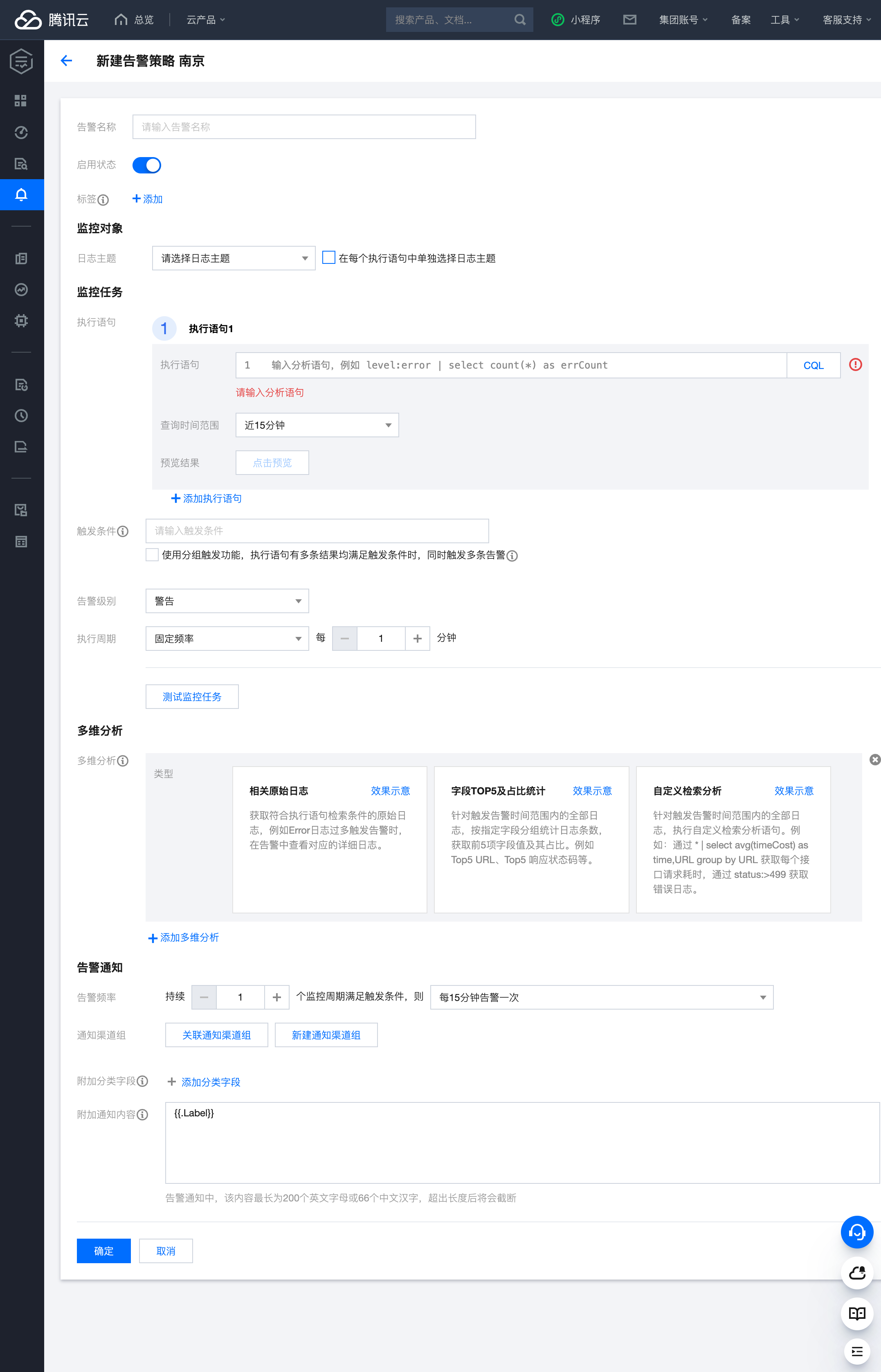Tencent Cloud CLS Integration
In Flashduty
Using Private Integration
Expand
1.
2.
3.
4.
Using Shared Integration
Expand
1.
2.
3.
Route to configure more routing rules)4.
5.
In Tencent Cloud CLS
1.
2.
Create to start
3.
Name, select "Custom API Callback" for Channel Type, fill in the integration push URL in Callback URL, and select POST for Request Method4.
OK to save, Add to add multiple channels1.
2.
Create to start
3.
Alert Name, select the specific log topic4.
Execution Statement, select time range for query period, click Preview to check execution results, enter specific trigger conditions5.
Alert Level, choose between Critical, Warning, and Info based on alert severity, select execution cycle as needed6.
Multi-dimensional Analysis allows additional log analysis when alerts trigger, attaching results to notifications to help identify alert causes. This analysis doesn't affect alert trigger conditions.7.
Notification Channel Group can be linked to specific channel groups1.
2.
3.
{
"uin": "{{escape .UIN}}",
"nickname": "{{escape .Nickname}}",
"region": "{{escape .Region}}",
"alarm": "{{escape .Alarm}}",
"alarm_id": "{{escape .AlarmID}}",
"condition": "{{escape .Condition}}",
"happen_threshold": "{{escape .HappenThreshold}}",
"alert_threshold": "{{escape .AlertThreshold}}",
"topic": "{{escape .Topic}}",
"topic_id": "{{escape .TopicId}}",
"level": "{{escape .Level}}",
"label": {{.Label}},
"start_time": "{{escape .StartTime}}",
"start_time_unix": "{{escape .StartTimeUnix}}",
"notify_time": "{{escape .NotifyTime}}",
"notify_time_unix": "{{escape .NotifyTimeUnix}}",
"notify_type": "{{escape .NotifyType}}",
"consecutive_alert_nums": "{{escape .ConsecutiveAlertNums}}",
"duration": "{{escape .Duration}}",
"trigger_params": "{{escape .TriggerParams}}",
"record_group_id": "{{escape .RecordGroupId}}",
"detail_url": "{{escape .DetailUrl}}",
"query_url": "{{escape .QueryUrl}}",
"message": {{.Message}},
"query_result": {{.QueryResult}},
"query_log": {{.QueryLog}},
"analysis_result": {{.AnalysisResult}}
}Status Mapping
Tencent Cloud CLS monitoring alert level mapping to Flashduty:
| Tencent Cloud CLS | Flashduty | Status |
|---|---|---|
| Info | Info | Info |
| Warn | Warning | Warning |
| Critical | Critical | Critical |
修改于 2025-03-27 07:50:42



